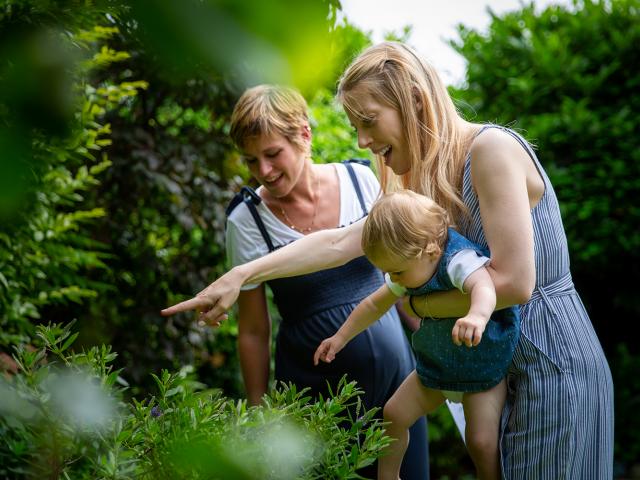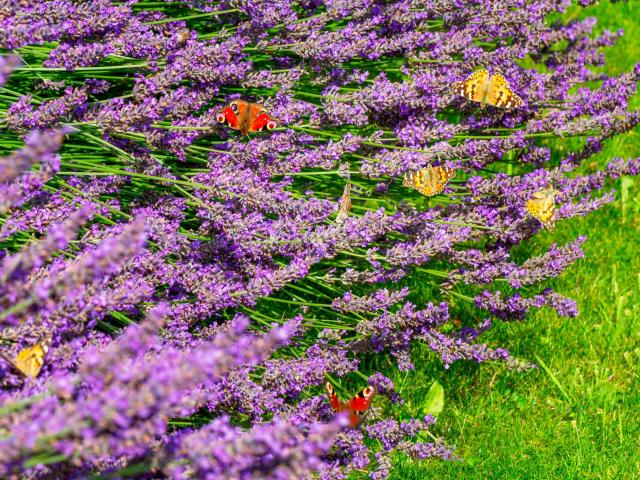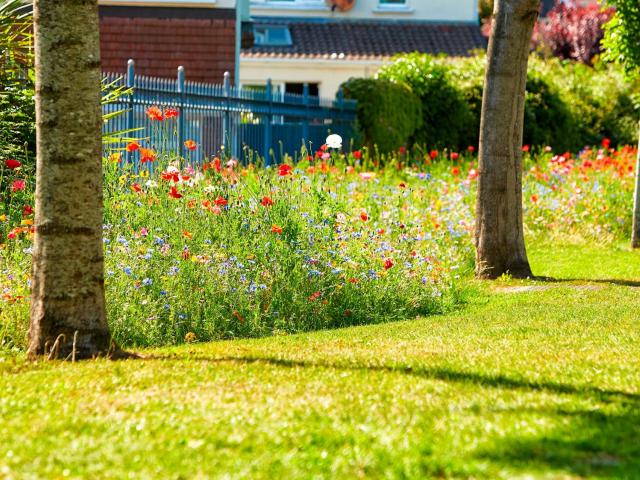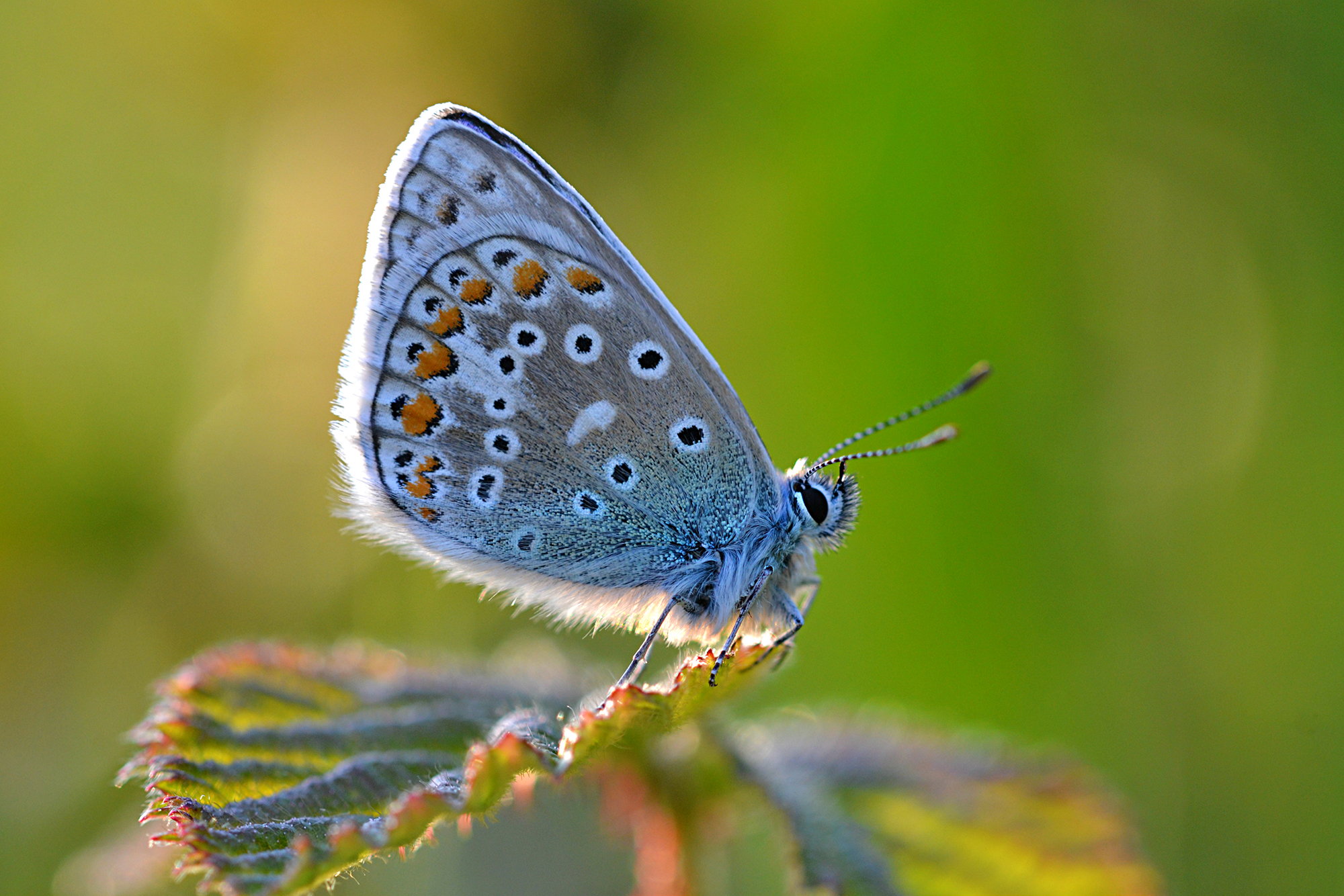Creating habitats for butterflies and other pollinators can have a positive impact for people as well as nature.
The evidence that connecting to nature is good for you is increasingly compelling. Many recent studies have shown the wellbeing benefits of spending time outdoors, including Butterfly Conservation’s own study with the University of Derby, demonstrating reduced anxiety through participation in our Big Butterfly Count.
With this in mind – and as we face unprecedented challenges to conserve species and address habitat loss – it is more vital than ever that everyone can access and enjoy wildlife on their doorstep. This concept is at the heart of Wild Spaces, Butterfly Conservation’s ambitious strategic goal to transform 100,000 spaces where butterflies and moths can thrive by 2026.

Wild Spaces is all about engaging people from many different walks of life across the UK, inspiring them to take action, both as individuals and as part of their community. Colourful creatures such as our native butterflies and moths provide opportunities for us all to connect to nature and feel better.
There is no doubt that creating or improving a wild space can give nature a helping hand, and the personal benefits we might gain apply regardless of the size of the space. From small planters on an urban balcony, to a few pots of herbs (such as Marjoram) on a patio, an area of grass left wild in a garden or a large outdoor community space providing habitat for butterflies and moths throughout their life cycle, all the Wild Spaces you create matter.
The right balance
Research undertaken in urban gardens in Bristol in 2019 by the RHS found that the mix of seasonal native species in a space was more important for nectar provision than the size of the plot itself. This shows that whatever space we might have available to us, we can all make a difference by taking a few simple steps. What we chose to plant, weed, prune or mow makes a difference.
For anyone unsure of how to start, Wild Spaces provides simple resources offering step-by-step advice and guidance, tailored to suit the type of Wild Spaces being created or improved. This includes packs for primary schools to create Wild Spaces in their grounds and help inspire a new generation of enthused naturalists.
Our ambition is to create a growing movement, with an active online community of ‘Wild Spacers’ that helps people share their experiences and connect to others within and beyond their own neighbourhoods.
We are pleased to report that 1,200 Wild Spaces have already been registered – including in gardens, public parks, on road verges and allotments. In the weeks and months ahead, we will be focusing on creating Wild Spaces in urban areas to help people most at risk of green space deprivation to gain access to nature where they live.

Nature for all
Engaging people from diverse backgrounds is also a priority. This will build on our National Lottery Heritage Fund project already under way in Perth and Stirling, which runs workshops and discovery days for the local community, as well as visits to demonstration Wild Spaces to provide inspiration.
We have also set ourselves a target to develop partnerships with mental health charities and other experts to help us examine the wellbeing benefits of creating these spaces and being part of the wider Wild Spaces community.
Engaging people from a wide range of different backgrounds, locations and communities will not be easy. Many conservation organisations share the challenge of widening their reach across society. Like Butterfly Conservation, many have set ambitious targets to improve the inclusivity of their work.
Such targets are vitally important to help drive new ways of working and increased collaboration, which is why working in partnership is at the heart of Wild Spaces. To address the increasing reality of lack of access to green spaces, providing opportunities for everyone to access and enjoy nature will be critical. This can only be achieved if organisations from different sectors increasingly work together towards shared goals.

We believe Wild Spaces has an important role to play in helping to create a shared sense of empowerment and agency, providing easy ways to get involved. It aims to inspire people across the UK to feel they can make a difference, no matter if the steps taken feel small when viewed in isolation.
Collectively, as part of the growing Wild Spaces community, connecting to others and to a network of transformed spaces, we can all be part of something bigger. It is likely we will also feel better in the process.
To pledge or register your Wild Spaces, please visit our Wild Spaces page and watch out for new online resources launching later this year.
As we seek to transform 100,000 Wild Spaces by 2026, the potential to help many thousands of people share the joy of watching butterflies and moths is very considerable indeed. Please join us.
Steve Gray
Head of Wild Spaces, Butterfly Conservation


